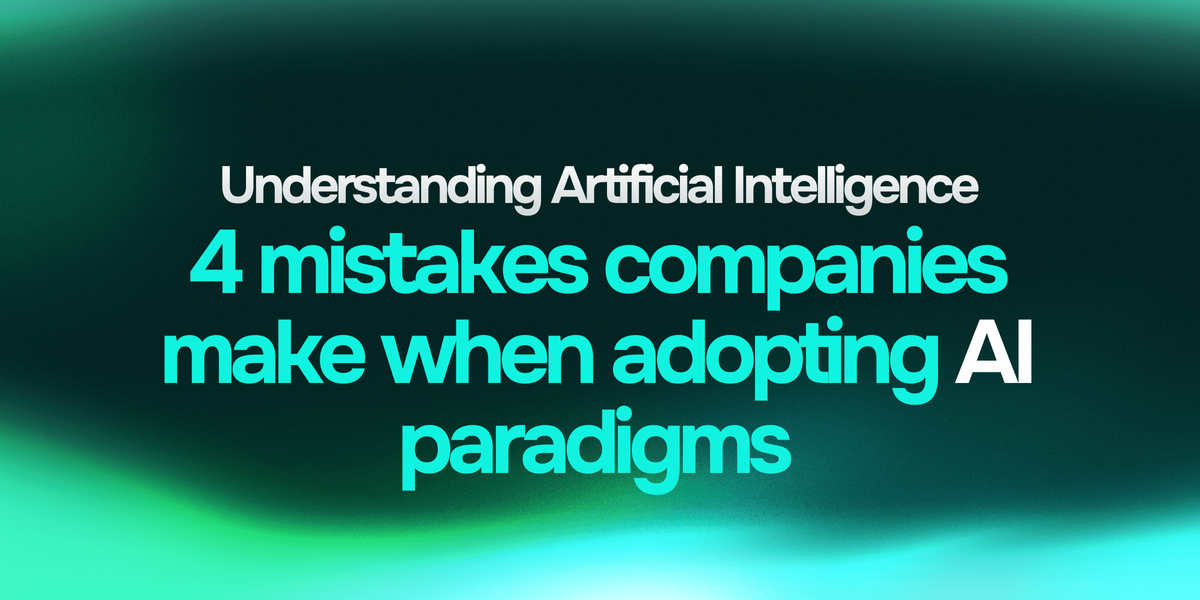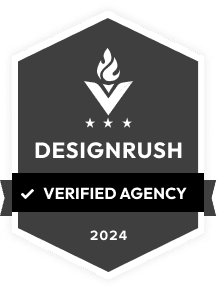
The Artificial Intelligence (AI) trends are growing in a flash, and many businesses across the globe are eager to harness AI’s transformative power for cutting-edge technology development.
AI promises unprecedented advancements in efficiency, decision-making, and innovation, but the road to seamlessly integrate AI into business operations is paved with challenges and potential errors.
In this article, we dive into four critical errors frequently made by companies venturing into the AI realm, and we come up with key advice to avoid these mistakes.
Understanding Artificial Intelligence
AI is not magic. Unlike traditional software, which follows strict, predefined paths, AI operates like a river, constantly adapting its course.
Think of it as teaching a child to recognize shapes: rather than programming every possible shape, you teach them principles of geometry. As they encounter new shapes, they use these principles to understand and categorize them, learning and evolving over time.
This adaptability and learning capability is what sets AI apart, making it a dynamic tool rather than a static set of instructions.
Many organizations trying to stay up to date with all AI trends fall into common pitfalls that can significantly hinder the effectiveness and potential of their AI initiatives.
From underestimating the importance of data quality to misaligning AI strategies with business objectives, these mistakes not only delay the realization of AI's benefits but can also lead to costly setbacks.
It’s crucial for companies to recognize and address these shortcomings and take action before their strategy falls into these “trend traps”.
4 common errors that can negatively impact your company when using AI
1. Underestimating data quality and quantity
Many companies underestimate the importance of high-quality, extensive data.
AI systems rely on data to learn and make accurate predictions.
It's not merely about having data; the emphasis lies in possessing high-quality and comprehensive datasets. AI systems, fundamentally reliant on data, leverage it to learn patterns and make precise predictions.
The repercussions of poor-quality or insufficient data are profound, often manifesting in AI solutions that fall short of expectations. Without a solid foundation of quality data, the predictive capabilities of AI systems are compromised, leading to inefficiencies and inaccuracies.
Key advice: Hire a data engineer.
This professional can bridge the gap between business objectives and data requirements, playing a crucial role in data modeling to ensure that the AI system is fueled by the right kind of data.
This strategic move enhances the chances of developing AI solutions that deliver the desired and impactful results for your business.
2. Failing to align AI strategy with business strategy
Why do we need an AI strategy?
This is the question every Project Manager should address first.
Many companies enthusiastically adopt AI technologies without first ensuring that these initiatives are in harmony with their business strategy.
This misalignment can lead to a significant mismatch between the outcomes of AI projects and the company's long-term goals, ultimately resulting in wasted resources, misdirected efforts, and missed opportunities.
Key advice: Prioritize aligning your AI strategy with your business strategy.
This involves a comprehensive understanding of organizational objectives, clear communication between departments, and a strategic roadmap that ensures AI initiatives contribute directly to the broader success of the company.
By bridging the gap between AI endeavors and business goals, organizations can unlock the full potential of artificial intelligence to drive meaningful, aligned, and sustainable outcomes.
3. Neglecting the need for multi-disciplinary team and communication between cross-functional teams
In the rush to adopt AI, many companies overlook the critical need for skilled personnel who are adept in AI technologies.
Key advice: Establish a cross-functional team involving both IT and business leaders.
This collaborative team should work collectively to identify and prioritize AI use cases that directly align with the company's strategic objectives.
Moreover, it is crucial to conduct a thorough assessment of existing processes and workflows to pinpoint areas where AI can add tangible value.
This involves engaging key stakeholders from various departments to gather insights into specific business challenges and opportunities.
By fostering this collaborative environment, companies can tailor their AI strategy to address real business needs and ensure that the implementation aligns with the broader organizational goals.
4. AI Doesn’t Solve Any Problem
This is a misconception that leads to unrealistic expectations.
AI is a tool, not a solution in itself. It requires clear objectives and proper implementation to address specific issues.
Using AI without a clear problem statement or goal can result in wasted resources and disappointing outcomes.
Key advice: Approach AI implementation with a strategic mindset.
The key lies in allocating dedicated time for thorough research and prototyping before fully committing to AI integration. This process allows organizations to assess whether AI is genuinely the most suitable solution for their specific challenges.
During this phase, it's crucial to define clear objectives and outline how AI aligns with solving identified problems.
Additionally, exploring alternative approaches, such as traditional Machine Learning algorithms, can provide valuable insights.
Sometimes, a simpler solution may be more effective and resource-efficient.
The key advice here is to treat AI as a thoughtful and deliberate addition to your toolkit, ensuring that it is applied to problems where it can truly make a meaningful impact.
This strategic approach not only safeguards against wasted resources but also sets the foundation for realistic expectations and successful AI implementation.
In conclusion
Embracing Artificial Intelligence (AI) is a very provocative topic. Every company now considers AI a “MUST”. But, it requires strategic precision.
Recognizing that AI is not a magic solution but a dynamic tool requiring clear objectives and proper implementation is the first step in avoiding the pitfalls discussed.
Allocating dedicated time for research, hiring a data engineer, and aligning AI strategy with business objectives are pivotal steps. Additionally, fostering collaboration and communication between IT and business teams is crucial for successful implementation.
By adopting a deliberate and tailored approach, businesses can harness AI's transformative power, avoiding pitfalls, optimizing resources, and ensuring meaningful outcomes.







